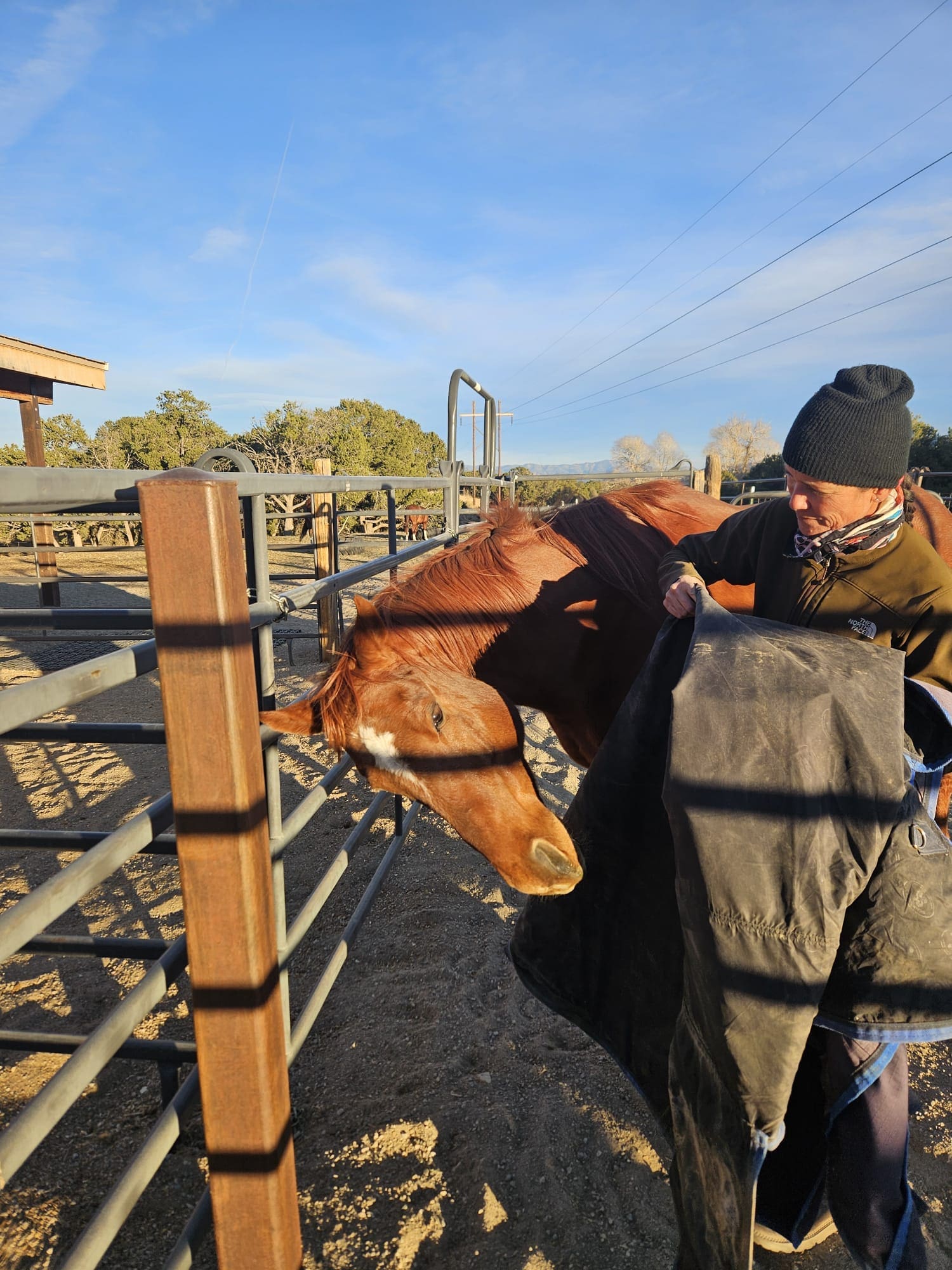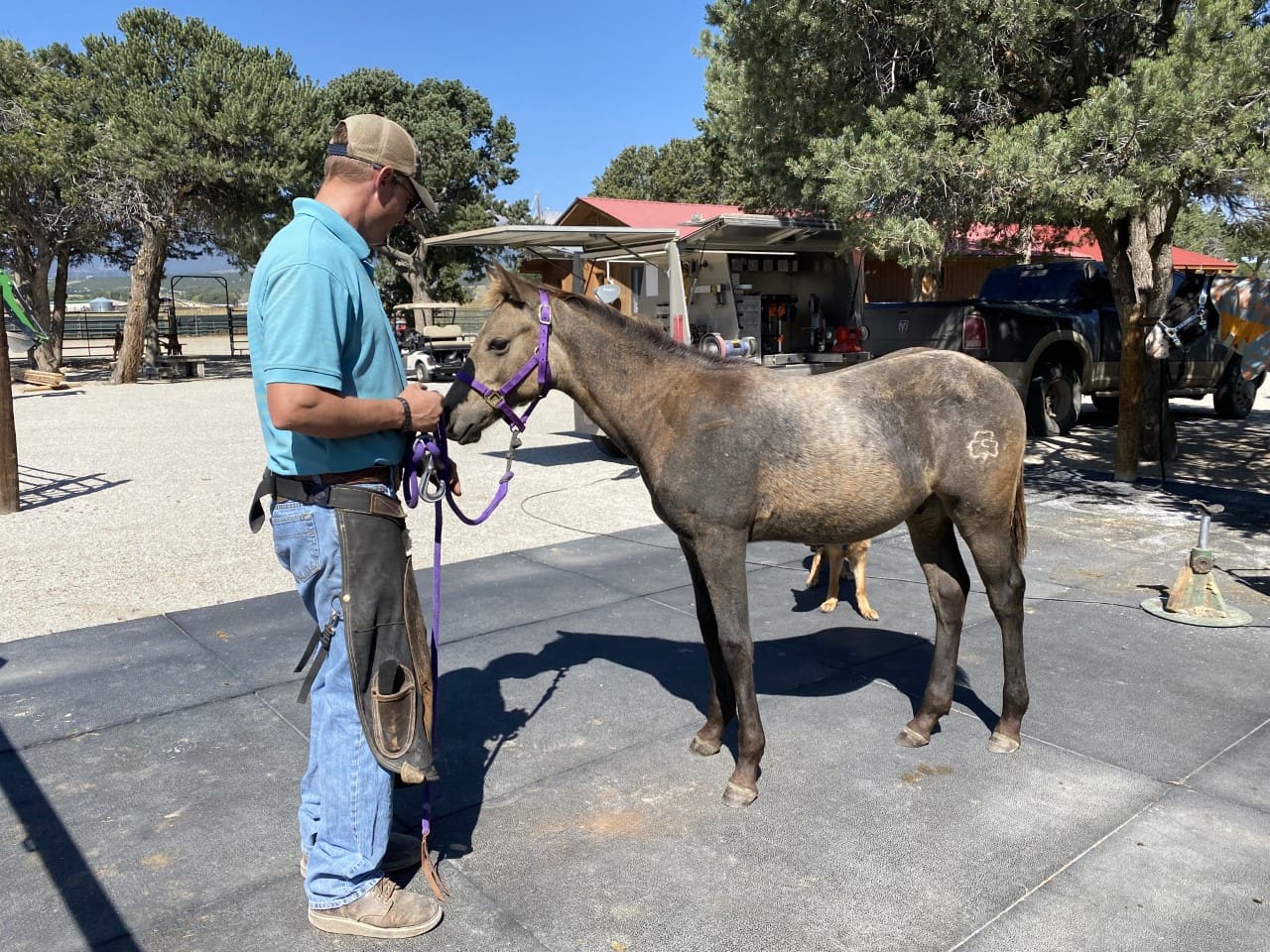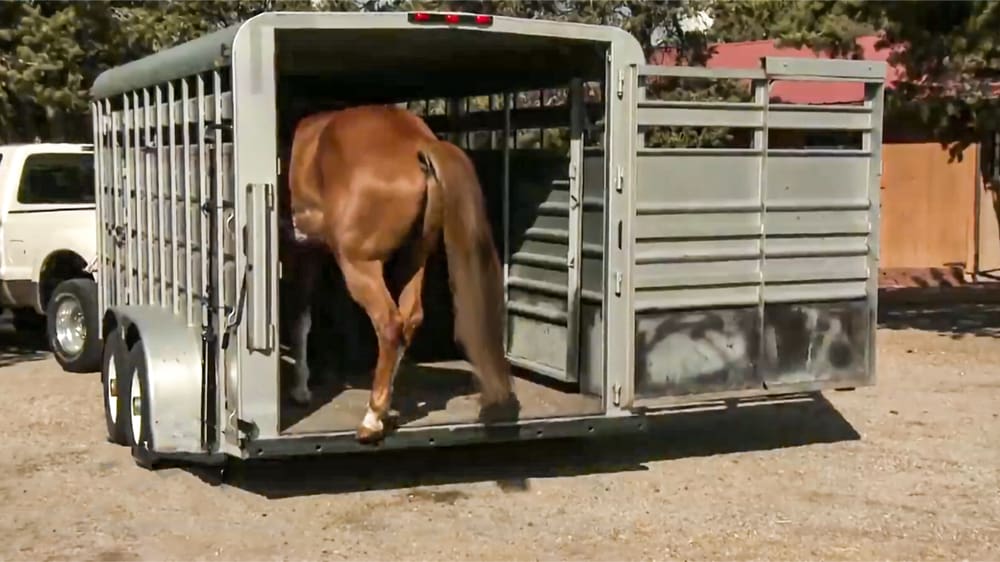Tips for Making Your Horse-Keeping Life Easier This Winter
Here in the high mountains of Colorado, where my horses and I live, winter comes early and hard. Our preparations begin before the summer is technically over and our efforts then will make a huge difference in how happy or miserable our winter horse-life will be.
Hay: I prefer to buy my hay for the entire year in the fall, when prices are stable and the hay is cured and stored in a barn. For our 5 horses, I get about 20 tons of the best grass hay I can find. You can best budget your hay by the ton, not the bale, since a bale could range from anywhere from 50 to 1500 pounds. It’s simple math to figure out how much hay you need for the year for the average horse: 1/3 ton per month per horse, or 4 tons a year per horse. In buying for a year in the fall, I am sure to have plenty of hay next year if the earlier crops are not good.
Leather and tack room: Climates vary greatly but generally either your leather is too dry or too wet. Try to take care of your leather accordingly, but keeping it cleaned and conditioned is always important. My climate is extremely dry and very cold, often below zero. So we heat our tack and feed rooms, up to about 50 degrees, to make sure everything from leather to bits to medications aren’t frozen. Tip: if your tack room is prone to occasional mild freezing, a dorm-sized refrigerator (set as warm as it will go or even turned off) is a good place for meds, ointments, etc. that you don’t want to freeze. The fall is a good time to go through all your tack and check for wear, repairs needed, to clean and condition heavily so it is ready for next year and going through the winter in good shape.
Blankets: Clean and repair winter blankets during the summer. If the dirty blanket has accumulated hairy-grime, use a metal curry to clean it off and loosen caked-on grime before washing. Wash heavy blankets at a laundromat that has big machines. Use soap made for horse blankets—it really helps dissolve the grime and is safe for your horse’s skin. We re-fit, re-assign and re-label the blankets for each horse each fall. We use white duct tape and a marker to make the label and then put it on the chest of each blanket, so it’s easy to find the right blanket. For western saddle pads, I use wool-felt pads and I wash them once a year in the fall at the car-wash (rinse only), then we hang them out in the sun until they dry (which may take days).
Most horses don’t need blankets—they are incredibly adaptable to any climate. I live near South Park (yes, it is a real place), where it is sometimes 20-30 below zero for sustained periods (weeks not days). Anyone driving through the valley can see large herds of horses on snow covered, huge pastures, and they manage just fine with a windbreak, water and hay, but no blankets. However, not all horses are that tough. If your horse is old, thin, sick or growing, he may need a blanket. If he is in heavy training or showing, he may need a blanket to keep his hair-coat short. We ride our horses just as hard in the winter, but we are riding indoors in a warm environment; a long-coated horse will sweat buckets and a wet horse with temps below zero is a big problem. We keep several full-body, wicking fleece coolers on hand for keeping a sweaty horse from becoming chilled while he dries. Our horses stay blanketed throughout the winter mainly to manage the winter riding sweat, not to mention the occasional blizzard. Consequently, each horse has several garments: both mid and heavy weight winter turnout blankets (breathable/waterproof), a turnout sheet (breathable, waterproof with turtle neck, but no insulation), plus a UV/fly sheet for summer. For the most part, this is not because my horses need them, but because of the way I want my horses to look (my horses earn their living as TV, magazine and video models and they have to be ready for a photo shoot at any time).
Winter Chores: I need heavy-duty waterproof rubber work gloves, for breaking ice and dealing with water in the winter. I hate cold hands and wet gloves. I want good shovels of every kind—snow, an aluminum scoop, and a flat-bottom shovel and a pointed shovel. And occasionally we will pull out the heavy steel pick to break up frozen manure piles or ice. Around my barn, we have to breakout the heated water buckets and check the heaters in the automatic-waterers in October. The harder your winter the more serious your concern in this area but if water lines freeze, it could make your horse-keeping life extremely hard. So be prepared and consider having a back-up method for watering your horses, should you encounter problems with your primary water source.
Trailer: In the late fall, after my last trip before the holidays, we clean and power-wash each trailer inside and out, pull the mats up until the floor and mats are dry, close up the vents and windows and cover the wheels. I do my annual trailer maintenance in the spring before I start my travel season.
Horses: Although we use fecal egg-counts to determine when horses need deworming throughout the year, I always like to deworm with ivermectin after the first really hard frost for a final purging of pests and worms. We also pull shoes before winter sets in and before the ground is really frozen. Hard frozen ground can be like walking on rocks for a tender-footed horse, so I leave a little extra hoof-length to help prevent foot soreness, should the temperatures plummet suddenly. I like to leave my horse’s barefoot as much of the year as possible for hoof-health. I do teeth exams and vaccinating for my horses in the spring, but in some areas and in some situations, your horse may need fall vaccinations too—consult your vet.
Human: I approach winter knowing I will, at some point, be out in the barn in the coldest, nastiest winter weather, so I want to be ready. After 30 years of living on a horse farm in the mountains of Colorado, I’ve learned how to keep warm in the worst weather. I like insulated leather gloves for all-purpose riding and chores (finding a good fit can be a challenge for women with small hands like me). I keep a case of disposable hand-warmers for the worst times. I wear insulated canvas coveralls (Carhart makes women’s) with an insulated canvas jacket for outerwear, with silk long johns and sweat pants underneath. And a must-have is an insulated, waterproof boot with a heel for safe riding. I also wear a thin, windproof neck gaiter (look at a ski shop or outdoor store), which doesn’t choke me and fits well under a hat or helmet. Not only does it keep me warm, but it also keeps the hay from going down my shirt collar. For riding on cold days, I wear winter-weight, windproof fleece jodhpurs—black ones to soak up the sun!
After 30 winters of taking care of horses in the Colorado mountains, I’ve learned a few things to help make my horse keeping life easier. Hopefully, some tips here might help you this winter. I’ve experimented with just about everything I can think of except for moving to a southern, low-altitude climate. But I think I’d rather deal with the cold than give up the mountains.
Join Julie’s Library Membership for more Training Information



